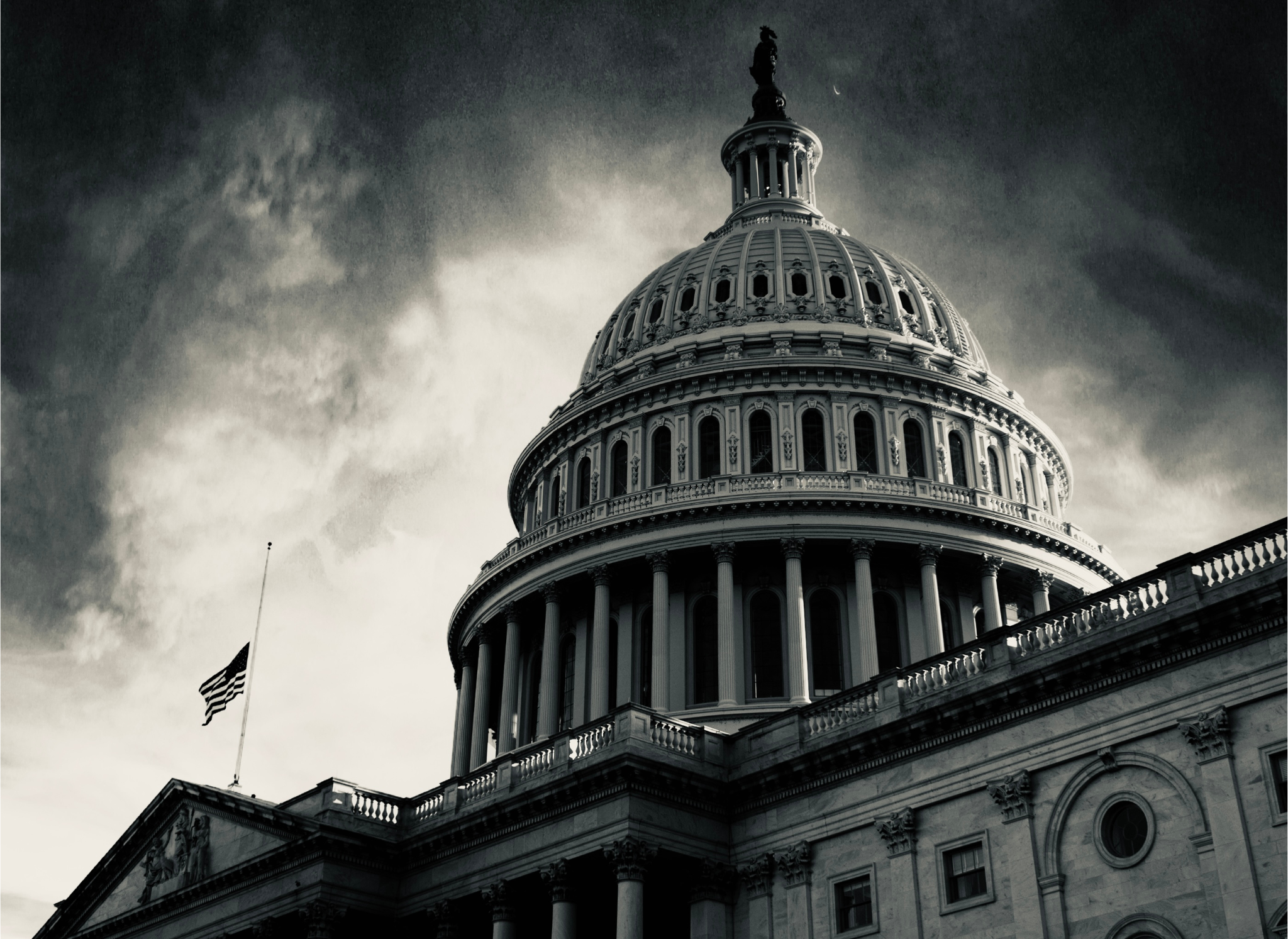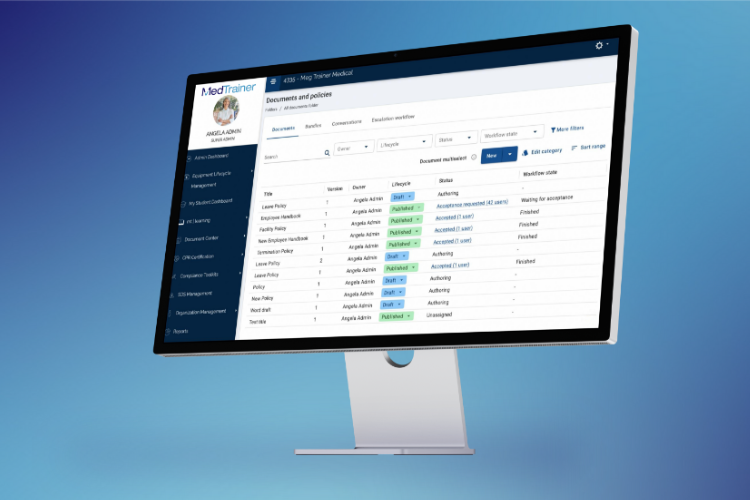While federal operations are slowed, reduced, or put on pause during a government shutdown, healthcare services must continue to operate. But what does this mean for your healthcare business? What will change and what will stay the same? Are there increased risks you need to be aware of? Are there actions you can take ahead of time to prepare? Compliance officers, human resource leaders, credentialing teams, and administrators are all asking themselves these critical questions.
This blog post explains the impact for organizational operations in the event of a shutdown, and what healthcare leaders can expect based on previous years. With Congress having passed the required appropriations only four times in the past 50 years, it’s time to take a closer look at how such an event may impact your organization, staff, and patients.
What Is a Government Shutdown?
A government shutdown occurs when Congress fails to pass the 12 annual appropriation bills or a continuing resolution (CR) to fund federal government operations and agencies, or when the President refuses to sign such bills into law. Without budget authorization from Congress, a variety of government services and operations come to a halt. Essential services, however, such as those related to national security or public safety, continue to operate — albeit with fewer resources.
During a shutdown, non-essential federal employees are furloughed, or placed on temporary unpaid leave, while essential personnel continue to work, sometimes without immediate pay. The impact of a shutdown can vary significantly depending on its duration and which government functions are affected. The day-to-day operations of many agencies suddenly stop, leading to a range of disruptions in various sectors, including healthcare, transportation, and law enforcement.
Government Shutdowns and Healthcare Impacts
Medicare and Medicaid
Medicare and Medicaid are typically less affected by a government shutdown due to their mandatory programs, which means their funding isn’t so reliant on the annual appropriations process. Based on previous shutdowns, it’s probably safe to assume that the Centers for Medicare and Medicaid Services (CMS) will continue processing Medicare claims, and Medicaid will maintain its payments to states.
However, with about half of CMS staff furloughed, it’s wise to anticipate delays in claim reimbursements. While payments could take longer, so might Medicare/Medicaid enrollments for organizations, providers, and patients. In addition, an already existing backlog of appeals from CMS provider and health plan audits will only grow during a shutdown, resulting in further delayed completions and recoupments. Planning ahead by reviewing and adjusting your budget to accommodate for these delayed timeframes, can make the difference between sink or swim.
Indian Health Service
The Indian Health Service (IHS) recently had a big win by obtaining its very first advance appropriation for Fiscal Year 2024. This forward-funding model shields patients and organizations from the negative consequences of possible CRs or funding gaps. It brings a much-needed element of financial stability and predictability to the Indian health system. The positive impact of advance appropriations is already clear, as hospitals and health clinics have noted enhanced capacity for healthcare service planning and bolstered job security for healthcare workers.
The advance appropriation for FY 2024 allocates $5.1 billion to the IHS, maintaining nearly the same funding levels as those enacted in FY 2023 for most programs. This ensures that these programs will have access to the full amount of their previous year’s funding from October 1, 2023, independent of any Congressional decisions regarding the FY 2024 appropriations.
Community Health Centers & Federally Qualified Health Centers
With inflation and staffing shortages already risk factors for community health centers (CHCs) and other Federally Qualified Health Centers (FQHCs), a government shutdown could send operations into a devastating downward spiral. While reimbursements from Medicare, Medicaid, and private payers would continue, the bulk of their funding — grants from the Health Center Program and Community Health Center Fund (CHCF) — could come to a screeching halt. The Health Resources and Services Administration’s (HRSA’s) CHCF provides around 70 percent of federal funding for all health centers. The CHCF is passed every three years and each time Congress cannot agree on a spending bill, the fund is at risk of being emptied. While the length of a government shutdown is unpredictable, funding would be restored in accordance with the new spending bill once passed. Health centers would likely receive reimbursements for missed funding during the shutdown, although it is not a guarantee.
With a lapse of funding, the biggest challenge health centers would face is recruiting and retaining staff. With so much uncertainty and the possibility of layoffs to preserve funds, residents and providers are less likely to sign a contract with a health center at risk. Undoubtedly, this problem would only compound existing staffing challenges, resulting in more pressure on staff who remain employed and increased administrative burden. With these predicaments in mind, it’s wise for healthcare leaders to consider this forecast and plan accordingly.
How Healthcare Leaders Can Prepare for a Potential Government Shutdown
The sudden onset of instability caused by a government shutdown can send administrative staff scrambling. Healthcare organizations facing a government shutdown can take several measures to mitigate its impact. As a healthcare leader, some ways you can plan ahead are:
Review Financial Reserves: Assess and plan for the utilization of financial reserves to cover critical expenses during the shutdown.
Understand Funding Sources: Determine which revenue streams will be affected. For example, understand how long Medicare and Medicaid reimbursements will continue and plan accordingly.
Plan for Staffing Challenges: Develop contingency staffing plans in case of furloughs, such as cross-training current employees to fill multiple roles or hiring temporary workers.
Rely on Pre-Set Reminders. Replacing licenses and certifications as soon as they expire means you are always ready for recredentialing and can submit documents in advance of a government shutdown. Using an online system with automated reminders can help.
Adjust Budgets: Temporarily revise budgets to ensure the sustainability of essential services, delaying non-urgent expenditures where possible.
Monitor Federal Communications: Keep up with announcements from the Department of Health and Human Services (HHS) and other relevant agencies for updates on the status of funding and services.
Maintain Compliance: Uncertainty and staffing shortages can increase risk if employees are not closely following policies and procedures that comply with healthcare regulations. Reiterate the importance of diligence and maintain your documents and policies.
Secure Supply Chains: Confirm with suppliers and vendors their plans for the shutdown period to prevent or prepare for any potential disruptions.
Documentation for Reimbursement: Ensure thorough documentation during the shutdown to facilitate claims processing and reimbursement once the government reopens.
Recovery Planning: Have a recovery plan in place for when the shutdown ends, to quickly address backlogs in administrative tasks, patient care, and financial reconciliations.
By taking these proactive steps, healthcare administrators can help ensure the continuity of critical healthcare services during a government shutdown, while also preparing for the return to normal operations.
Streamline your compliance with MedTrainer
Plan Ahead Now
Since a delay in federal budget approval is always likely, knowing what to expect and how to prepare is key. Apply the resources and tips above to ensure your facility is prepared and continues to operate with as little disruption as possible. By understanding the risks to your organization if the government fails to stay open, you can develop a plan and feel confident in your operations, regardless of how long a potential shutdown lasts. Don’t wait until the last minute — the clock is ticking.

